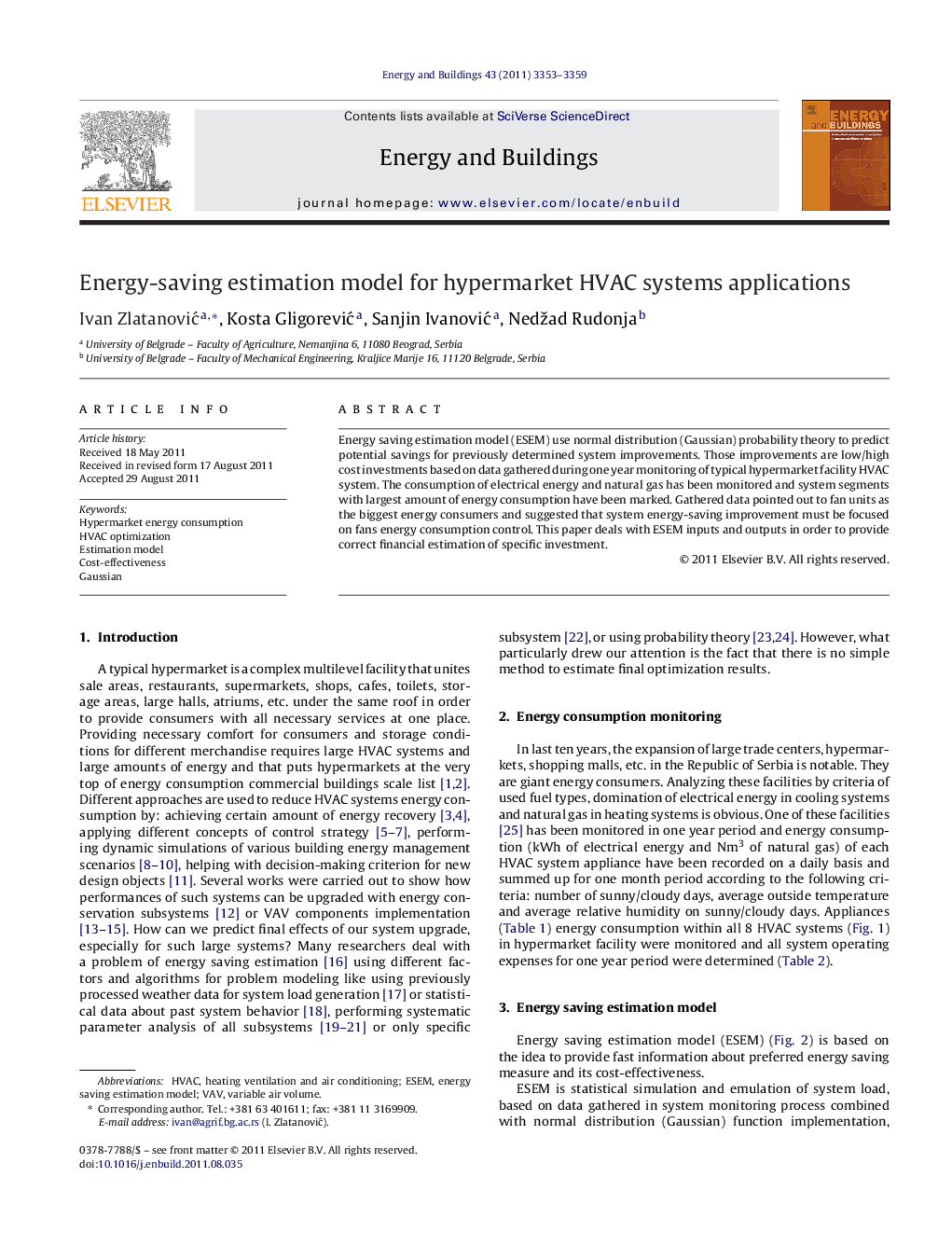| Article ID | Journal | Published Year | Pages | File Type |
|---|---|---|---|---|
| 264199 | Energy and Buildings | 2011 | 7 Pages |
Energy saving estimation model (ESEM) use normal distribution (Gaussian) probability theory to predict potential savings for previously determined system improvements. Those improvements are low/high cost investments based on data gathered during one year monitoring of typical hypermarket facility HVAC system. The consumption of electrical energy and natural gas has been monitored and system segments with largest amount of energy consumption have been marked. Gathered data pointed out to fan units as the biggest energy consumers and suggested that system energy-saving improvement must be focused on fans energy consumption control. This paper deals with ESEM inputs and outputs in order to provide correct financial estimation of specific investment.
► Energy consumption of hypermarket systems was monitored and biggest energy consumers were located. ► Low/high cost improvements were selected for several HVAC system. ► All gathered data is processed with normal distribution based ESEM model. ► ESEM results were used to estimate energy consumption improvements. ► Financial viability calculations were performed for this investment.
